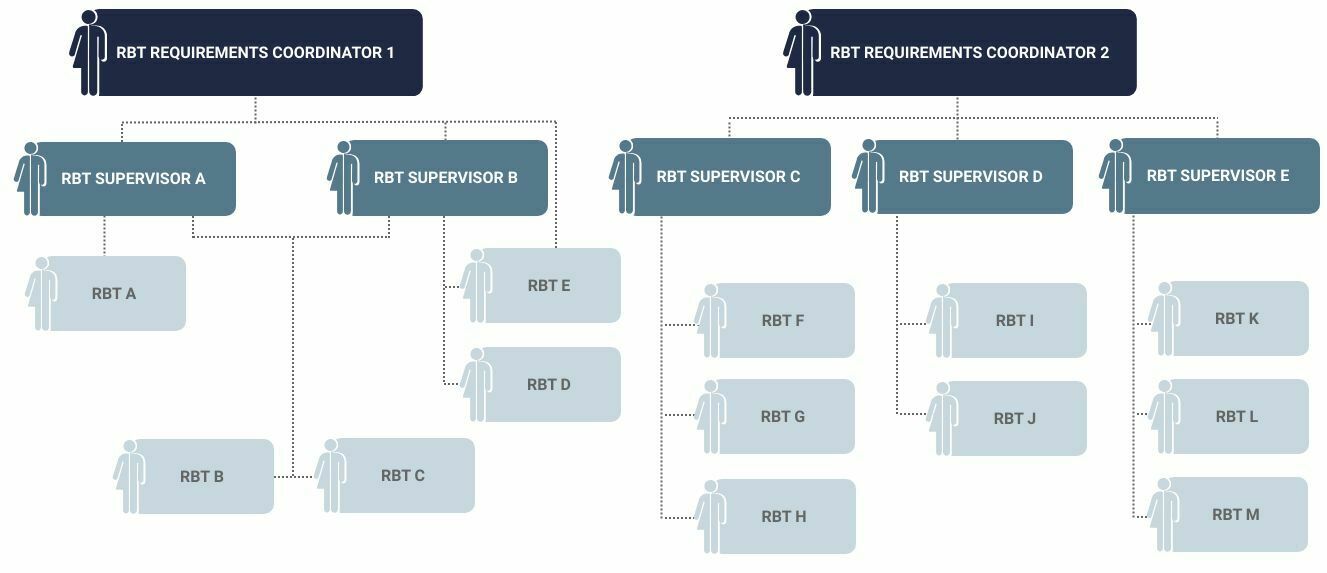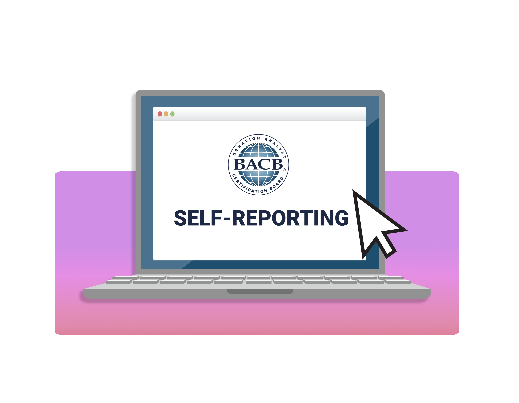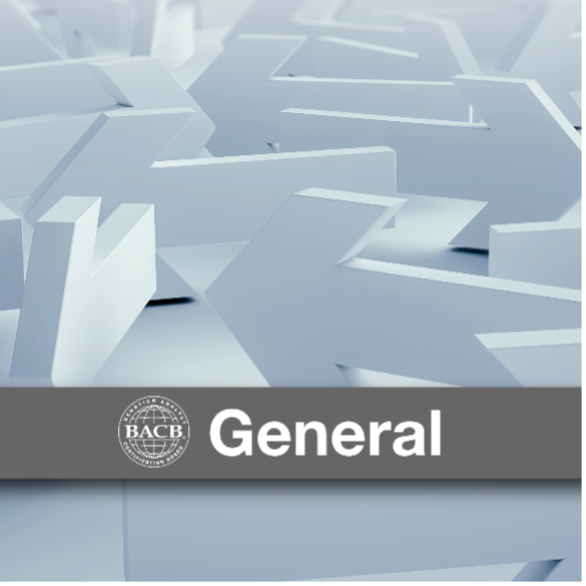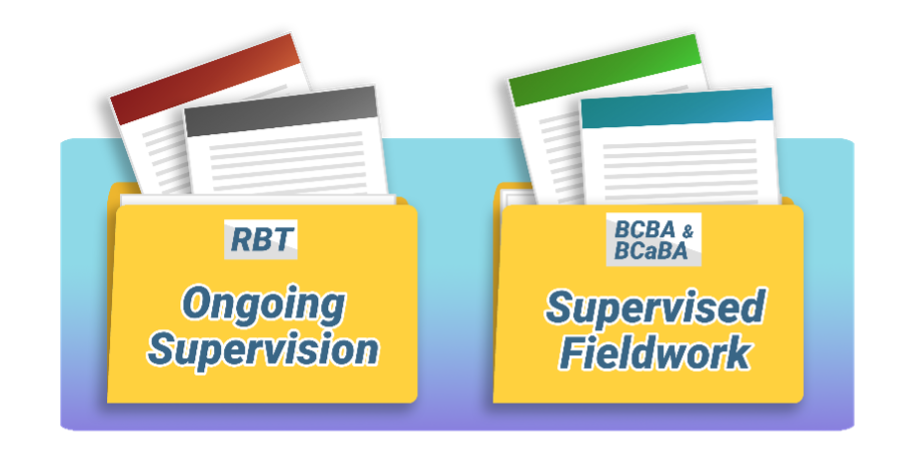UPDATED: January 28, 2025
Are you at an organization with RBTs and want to ensure they meet their monthly supervision requirements?
Have you heard of RBT Requirements Coordinators and wondered if they’re a good fit for your organization?
Are you curious about alternatives to your RBT-supervision structure?
If you answered yes to any of these questions, this blog post is for you.
Organizations employing RBTs can adopt one of two supervision structures for RBT supervision: the RBT Supervisor Structure or the RBT Requirements Coordinator Structure. In this blog, we’ll review the two RBT-supervision structures to help you decide what model best supports your RBTs, supervisors, and clients. Let’s dive in!
RBT SUPERVISOR STRUCTURE
In this first structure, RBT Supervisors are responsible for all the services RBTs provide and the RBT’s ongoing supervision. Organizations may assign each RBT Supervisor to one or more RBTs.
In this structure, each RBT Supervisor must:
- Provide each RBT with supervision that meets all the supervision requirements each month. Multiple RBT Supervisors at one organization may collaborate to ensure that all supervision requirements are met for an RBT.
- Oversee all the services the RBT provides
- Provide feedback, training, and professional development opportunities to their RBTs
- List every RBT they supervise in their BACB account (review the Process for Adding or Removing Supervisees document)
- Remove any RBT supervisees they aren’t supervising for an extended period
- Maintain accurate supervision records and provide documentation to the BACB if audited

In the event of an audit, all RBT Supervisors on record for an RBT at an organization must provide documentation for their supervision during the audited time.
This structure is likely suitable for small, single-site organizations with a small number of RBTs, BCaBAs, and BCBAs. In this setting, an RBT may have one or more RBT Supervisors on record within the same organization. The RBT Supervisor may fulfill all of the supervision requirements independently or may collaborate with other RBT Supervisors at the organization to meet the supervision requirements for each RBT. This includes completing observations, face-to-face interactions, and the minimum percentage of supervision hours each month.
Note: Ongoing supervision for an RBT only counts toward the 5% minimum if the RBT Supervisor has the RBT listed as a supervisee in their BACB account.
Example: A small, single-site organization employs five RBTs and two BCBAs. Each RBT is assigned to work with a few clients, all overseen by the same BCBA, who is responsible for client programming and ongoing supervision of their RBTs.
In this scenario, RBT A’s primary supervisor, BCBA 1, provided supervision and was on record as the RBT Supervisor with the BACB from January – September. In October, however, BCBA 1 went on leave and subsequently removed themselves as the RBT Supervisor.
Following BCBA 1’s removal, BCBA 2 added themselves as the RBT Supervisor for RBT A. When the BACB audited RBT A’s ongoing supervision for the last year, both BCBA 1 and BCBA 2 were required to provide supervision information since both were listed on RBT A’s record during that time. BCBA 1 provided supervision information for January – September, while BCBA 2 provided supervision information for October – December.
Here is an image to display how this might look:

RBT REQUIREMENTS COORDINATOR STRUCTURE
In this supervision structure, an RBT has one RBT Requirements Coordinator (Coordinator) and several RBT Supervisors. The RBT Supervisors oversee the services provided by the RBT and each RBT Supervisor provides a portion of the RBT’s ongoing supervision. In organizations like these, there may be one or more Coordinators, but each RBT only has ONE Coordinator at the organization. In the Coordinator model, only the Coordinator for the RBT should be listed on the RBT’s BACB account as “Requirements Coordinator.”

In the RBT Requirements Coordinator model, the RBT Supervisor(s) providing the RBT’s supervision should NOT list the RBT on their account.
The following table outlines the responsibilities of the RBT Supervisor(s) and the Coordinator for this structure:
| RBT Supervisor | RBT Requirements Coordinator |
|---|---|
|
|
This specific structure works well for large and/or multi-site organizations where RBTs work with clients under multiple BCaBAs or BCBAs because:
- Only the Coordinator needs to be on record with the BACB
- RBT Supervisors can work together to meet the monthly ongoing supervision requirements for an RBT. This allows organizations to adjust supervision schedules as needed (e.g., an RBT Supervisor can fill in if another RBT Supervisor is absent)
- There is one person responsible for monitoring supervision across multiple supervisors to ensure RBTs meet the supervision requirements to maintain their certification
- The Coordinator can provide supervision to RBTs as well
- During an audit, the BACB will have one point of contact concerning an RBT’s ongoing supervision
Example 1: In a single-site organization, an RBT will work with multiple clients. Each client the RBT works with may have different BCBAs, and, as a result, the RBT receives ongoing supervision from different BCBAs monthly.
In this scenario, the Coordinator reviews the supervision provided by all of the RBT Supervisors and ensures that each RBT meets the monthly supervision requirements. Here, the Coordinator is the only supervisor on record with the BACB for each RBT, and they receive and maintain internal records of all the supervision provided by the RBT Supervisors. For example, during an audit for RBT A, the BACB will contact the Coordinator listed in the RBT’s BACB account, to provide supervision records on behalf of all supervisors for RBT A during the audited timeframe.
Here is an image to display how this might look:

Example 2: In an organization with multiple sites across several states. RBT Supervisors may see clients across sites and, as a result, supervise multiple RBTs.
At the organization, there are two designated Coordinators—one per region. Each RBT is assigned to the Coordinator in their region. Their Coordinator ensures that they meet the supervision requirements across each RBT Supervisor before the end of the month. If an RBT Supervisor is absent, the Coordinator may assist with supervising an RBT not formally on their caseload. When RBT A is audited, for example, the Coordinator listed on their account is responsible for providing supervision information on behalf of all the RBT Supervisors who supervised the RBT during the requested time period.
Here is an image to display how this might look:

Considerations for the Coordinator Model
If implemented well, the Coordinator model can be useful for many organizations. If you want to set up the Coordinator Structure in your organization, it will likely require thoughtful system development. If you are using this structure or thinking about moving to this structure, consider the following questions:
- Do you have a way to set up a transparent and accessible process to track supervision compliance across RBTs and RBT Supervisors?
- How will supervision documentation be maintained, organized, and retained even if an RBT or RBT Supervisor leaves the organization?
- Do you have an established communication system among the RBT Supervisors to ensure they collaborate to meet the monthly supervision requirements and ensure each RBT’s continued professional development?

- Have you established a system for collecting and submitting documentation to the BACB in the event of an audit?
- Is there a process for verifying the qualifications of RBT Supervisors (e.g., 8-hr supervision training, active certification) before they supervise RBTs?
For more guidance and considerations regarding this model, review the Supervision Checklist for RBT Supervisors and RBT Requirements Coordinators and the Supervision Systems podcast.
Frequently Asked Questions
1.How many Coordinators can be in one organization?
A. There is no limit on the number of Coordinators an organization can have; however, each RBT may only have one Coordinator at the organization to ensure that one person coordinates and communicates with the certificant at the organization and the BACB.
2. Is there a maximum number of RBTs that a Coordinator can supervise?
A. No. The BACB does not set a limit; however, the Coordinator must be able to adequately monitor requirements for all RBTs for which they are responsible.
3. If an RBT has a Coordinator and an RBT Supervisor listed as a supervisor in their BACB account, will only the Coordinator be contacted by the BACB in the event of an audit?
A. All individuals on record at the time of an audit would be contacted. The reason for this is that the BACB won’t know at the onset of the audit if they are all at the same organization. If there are RBT Supervisors on record, it’s important for anyone contacted by the BACB to respond and indicate whether they are under the Coordinator on record, who will provide documentation for the audit. If they are at the same organization, the RBT Supervisor may remove the RBT as a supervisee because the Coordinator will be the one on record.
4. What if a Coordinator goes on a leave of absence? What should they do?
A. They should identify another qualified BCBA to take over the role and coordinate with them to add the RBTs as supervisees to their BACB account. The Coordinator going on leave should remove RBTs from their account until they return to their role. If an interim Coordinator is not identified, the organization can change the supervision structure to include RBT Supervisors (review the table above regarding the responsibilities of RBT Supervisors in organizations without a Coordinator).
5. Can a BCaBA be a Coordinator?
A. No. However, a qualified BCaBA can be an RBT Supervisor in both the RBT Supervision Structure and the RBT Requirements Coordinator Structure.
6. Will the Coordinator receive reminders about their RBTs’ upcoming renewal?
A.Yes.
7. Does the Coordinator need to be the one to administer the competency assessment?
A. No. They can delegate supervision and assessment tasks to other qualified certificants, such as an RBT Supervisor or a qualified BCaBA. If they delegate these tasks, it’s critical to effectively communicate with the supervisor or assessor to verify the completion of the requirements.
8. If an organization changes its RBT supervision structure, does it need to inform the BACB?
A. Once a Coordinator is identified, they should list all RBTs for whom they will be responsible for in their BACB account and change their role from RBT Supervisor to Coordinator.
9. If an RBT with two Coordinators from different organizations is selected for an audit, do the audit results apply to both Coordinators and both organizations?
A. No. If an RBT is selected for an audit, each Coordinator on record submits documentation for supervision provided at their organization during the audited timeframe. The audit results are specific to the supervision information provided by the Coordinator at the requested organization. However, if the RBT loses their certification as a result of being substantially noncompliance with supervision requirements, this may impact their ability to provide services at both organizations.






















 Represent yourself in the following ways:
Represent yourself in the following ways: Do not represent yourself in the following ways:
Do not represent yourself in the following ways:




